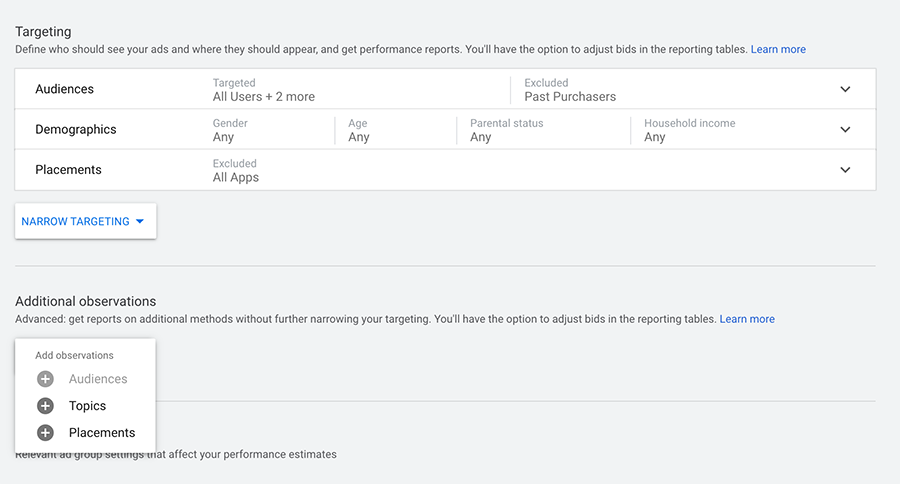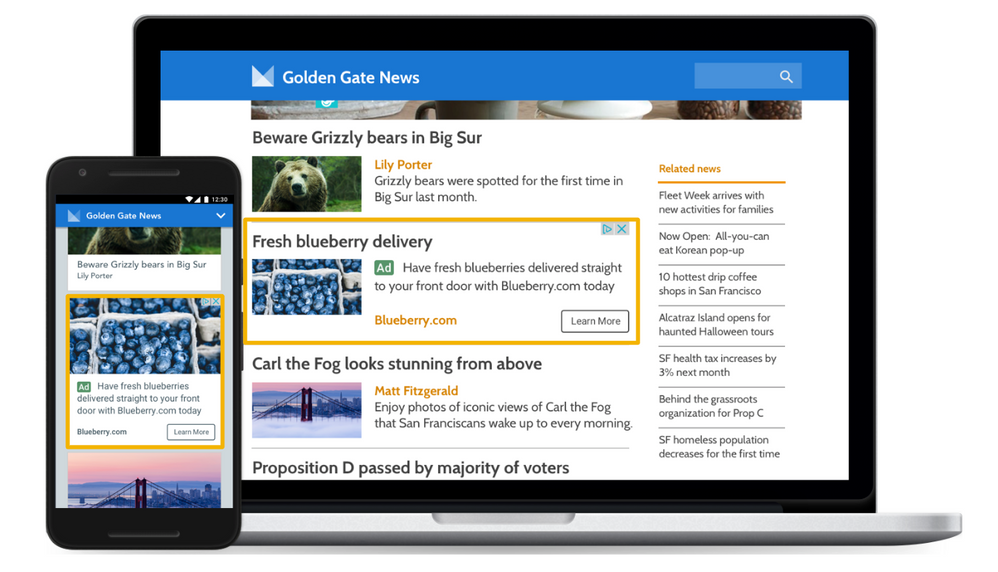Sections
Before You Launch a Display Campaign
So you’ve been having success with your paid search campaigns. You want to keep that good momentum going. If only there were other avenues for reaching your target audience and boosting conversions, all while remaining extremely measurable.
Good news: there is, and it’s called the Google Display Network. This is the other side of Google Ads, and it’s about time you explore it for your brand.
Read on to learn everything you need to know before launching a display campaign, along with pro tips from our paid search experts at Your Marketing People.
What Are Display Campaigns?
First, let’s explain what display campaigns are not. They’re not search campaigns.
When you advertise in Google search, you’re bidding for placement in the search engine results. These search ads take a variety of forms and placements, but they share a few things in common: they’re text-based, they show up when people are searching for your target keywords, and they appear exclusively in the search engine results.
Display ads, on the other hand, appear across the internet on other websites and apps. The Google Display Network includes over two million sites with the potential to reach 90% of internet users.
One other, major distinction they have from search ads? Display ads are visual. These are the ads that catch your attention on websites across the web, from major publishers and blogs to YouTube videos and even mobile apps.
Like search ads, display ads have standard placements they tend to occupy on sites within Google Display Network. They might be large banner ads at the top of a page, smaller banners in the middle, or square ad spots in the right rail.
There are a variety of supported ad sizes. We recommend testing to see which are most effective for you, but you can start with the ones Google found to be most effective. These include 300×250, 336×280, 728×90, and 300×600, and 320×100, as shown below:

Before You Launch Your Display Campaign: 4 Pro Tips to Follow
If you’re new to display advertising, let us give you a head start. Follow these best practices from our paid search experts at Your Marketing People.
1. Verify your audience targeting is correct.
Google Ads offers two settings: Targeting and Observation.
The “Targeting” setting allows you to tell Google what audiences you want to show your ads to. Essentially, it restricts the reach of your ads to the specific types of audiences you want to reach. Without Targeting turned on, your ads can show anywhere with very minimal limitations—eating up ad spend and making your ROI take a nosedive. For that reason, Google recommends using Targeting for all Display campaigns.
With the “Observation” setting, you don’t affect the reach of your campaign, but you can outline specific placements, audiences, or content you want to monitor closely. This is recommended for more advanced advertisers, as you can use these insights to adjust your campaign and targeting criteria.

2. Exclude mobile app placements.
The Google Display Network includes ads in mobile apps, where people (especially kids) are prone to click on your ads by accident.
From our experience, app placement can eat away your budget pretty fast. Of course, there are exceptions to this rule—most notably, if you are an app company, or have already seen good performance from this placement in the past.
If you’re interested in testing it out, go for it. Just keep an eye on it for a few days to see how it performs for you.

3. Turn off automatic expansion targeting.
When you set up targeting for your ads, you choose your targeting criteria carefully and with purpose.
Unfortunately, with Google’s automatic targeting, all that careful selection can go out the window. In Google’s defense, this feature was made with good intentions. It’s designed to increase the reach of your ads and show them to more users who Google believes will convert. However, much like mobile app placements, expansion targeting never works for us and only seems to eat up budget.
This sneaky setting is turned on by default, so you’ll need to go into Google Ads and turn it off.

4. Test both image ads and responsive ads.
Image ads are what you might expect: these are image files you upload for Google to use as your display ads. You manage the visuals, text, size, and everything else. It sounds ideal, until you remember that there are dozens of supported ad sizes. So, you’ll need to resize and reupload your ads for each ad size.

That’s why Google created responsive ads—to make your life easier. With these, you upload key details in Google Ads, such as your brand name, logo, copy, and any images and videos you want to use. Then Google automagically mixes and matches these to test which ones perform best with your audience, serving them in responsive sizes so they can display in various placements on various websites. The end result is impressive:
Both have their pros and cons, so we recommend running both to see what performs best.
Get Started with Display Advertising
Display advertising can be a smart way to significantly increase your brand awareness, convert interested audiences, and improve your ROI.
Because display ads follow users around the web, you’re interrupting them with a visually interesting reminder of your brand. That makes them perfect for—you guessed it—retargeting.
If you’re interested in how a retargeting campaign can work, take a look at our case study. Our display ads delivered a 30% higher conversion rate at a 28% lower cost per acquisition.







